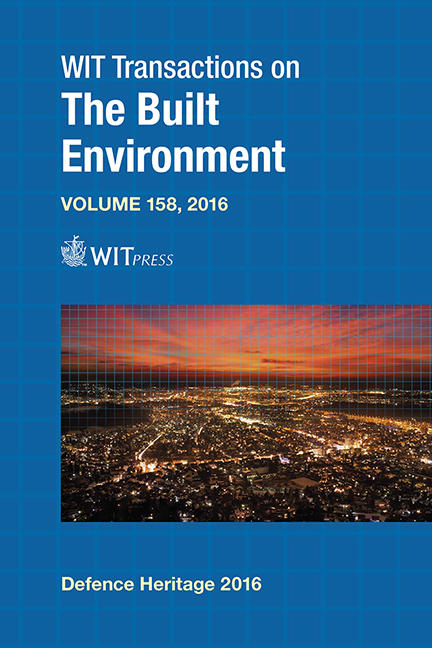The Influence Of Tabaire Stone On Military Architecture: The Case Of Cartagena (Spain)
Price
Free (open access)
Transaction
Volume
158
Pages
10
Page Range
85 - 94
Published
2016
Size
2,228 kb
Paper DOI
10.2495/DSHF160081
Copyright
WIT Press
Author(s)
A. Lasheras Estrella, M. I. Perez Millan, J. A. Martínez López, J. H. Alcañiz Martínez
Abstract
Cartagena, which is located in the western Mediterranean, has privileged geographical conditions. It is surrounded by the Mediterranean Sea in the south and the west, and in the north by a lagoon, which is currently dry. Its unique topography has allowed the development of the population since ancient times. Since prehistory, people have used material resources at their disposal in the environment, to meet different needs: survival, protection and construction. As far as building materials are concerned, quarrying has been an important source of supply for cities. Each region has its own sedimentary rock, Cartagena’s one is tabaire. It is a calcarenite stone extracted from Canteras, which is close to Cartagena (Spain). An important part of the archaeological and architectural heritage of the city was built completely or partly with this material. A large number of blocks have been provided to build the main architectural heritage of Cartagena, including military structures, for over two thousand years. In the present study, we analyze the presence of such significant building material for the city of Cartagena, particularly in its military architecture. For this purpose, we have developed a methodology based on the analysis of military buildings and fortified heritage, in which we have noticed the presence of tabaire stone, with the aim of studying the exploitation of this material and its impact on the military architecture of Cartagena and its history.
Keywords
tabaire stone, military architecture, fortified heritage, architectural heritage, Cartagena





